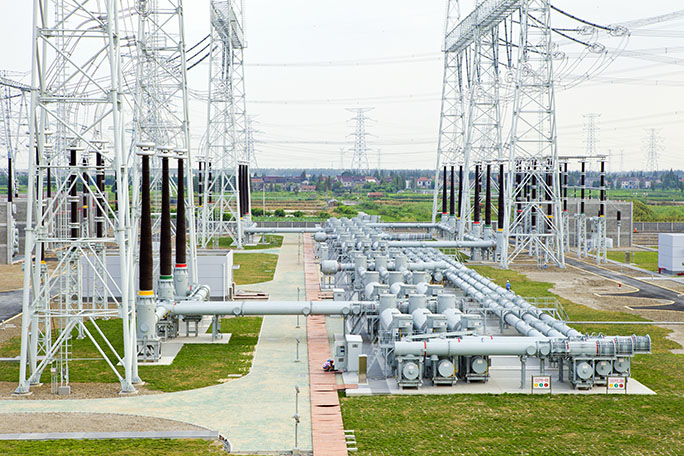Aiding the digital design of massive circuit breakers
Economic development and modern lifestyles are reliant on a constant and reliable supply of electricity, and high-voltage circuit breakers to protect against catastrophic network failures are critical in all large transmission grids. Researchers at the University of Liverpool are developing advanced, industrially capable computational models to vastly improve the cost effectiveness and reliability of circuit breakers. Moreover, they enable more environmentally friendly products to operate with greener gases whose global warming potential (GWP) is less than 1% of the gas used in the past 50 years.
The challenge
Gas blast circuit breakers depend upon complex multi-physics processes that, combined with their large size and fast operation, makes the design and performance testing processes extremely costly and challenging.
Computer simulation has become an indispensable tool to aid circuit breakers’ product design because even small changes in design parameters can lead to unexpected problems.
Research action
Fundamental research into the complex physics of gas blast circuit breakers by Professor Joseph Yan‘s research team at the University of Liverpool has enabled the development of a comprehensive digital modelling tool, allowing more reliable design test simulations.
In these highly nonlinear systems, research implementing physical models in computational fluid dynamics software packages has been used to obtain correct solutions and made the tool a reality. The resulting state-of-the-art circuit breaker simulation tool developed by Yan’s group has been implemented by three international industrial partners.
This has allowed a shift from costly and time-consuming physical test-based designs to simulation-guided methods with minimum test verification. Dedicated training delivered to industrial partners’ design engineers has greatly accelerated the uptake of the digital tool on an industrial scale.
Working in partnership
Close interactions between academic and industrial teams over the past 15 years has ensured a focus on developing a tool fit for industry. This focus has led to fruitful collaborations with industrial partners from China and Korea, including Pinggao Electrical Co Ltd (2007), Sieyuan Electrical Co Ltd (2010) and Hyosung Corporation (2017).
A sustained stream of funding from the manufacturers, in combination with a £20,000 grant received through research gateway in 2011, enabled the Liverpool group to further enhance the modelling software. The team has worked towards a more user-friendly platform, significantly reducing the difficulty level for design engineers to perform computer simulations and facilitating commercialisation of the product.

Outputs and outcomes
The move towards digital design practices has been a game-changer for partners and strengthened their competitiveness in the global market. As a result, significant cost savings have been achieved along with development time reduced from five to two years.
The modelling tool developed by the Liverpool team has been used by industrial collaborators to design 14 new product series. One of the optimised circuit breaker designs allowed a weight reduction from 24 tons to 10.6 tons. On average, the use of the simulation tool leads to a 20% land use reduction and a 30% manufacturing cost reduction.
In addition to optimising technological aspects of circuit breakers, research collaboration with Hyosung has contributed to a more environmentally friendly design that is in high demand by network operators worldwide. The new design has replaced the use of SF6, which had a strong global warming potential (GWP = 23,500), with a greener design with GWP less than 1% of SF6.
Physics research and industrial collaboration has allowed reliable design test simulations of powerful circuit breakers, saving vast sums of money and energy.